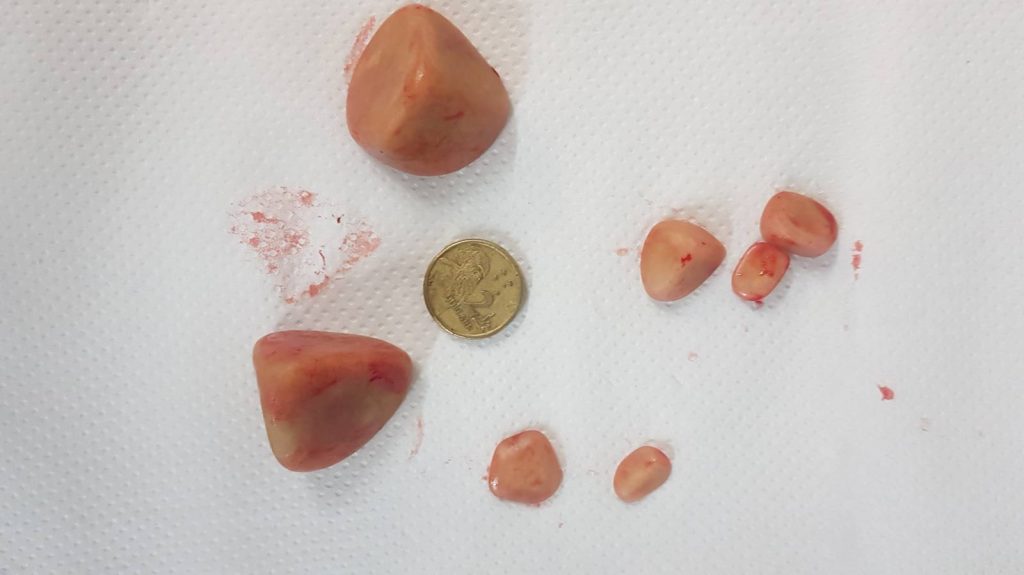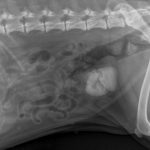Morrissey’s Bladder Stones

 This is Morrissey. Morrissey visited the clinic last month after her owners were worried that she wasn’t eating and had been vomiting. After consultation and radiographs she was found to have bladder stones (Urolithiasis). The radiographs show these sitting in her bladder; two large stones can be easily seen.
This is Morrissey. Morrissey visited the clinic last month after her owners were worried that she wasn’t eating and had been vomiting. After consultation and radiographs she was found to have bladder stones (Urolithiasis). The radiographs show these sitting in her bladder; two large stones can be easily seen.
The uroliths (stones) needed to be removed via surgical excision under a general anaesthetic. Morrissey handled the procedure very well and has made a complete recovery. There were a total of seven uroliths removed and these were sent for analysis. Preliminary results show these to be struvite and urate in their composition, however final results are still pending.
Uroliths especially to the size of Morrissey’s take time to develop/ precipitate within the bladder. They can be due to diet or chronic infections, with some breeds of dogs being more predisposed to developing certain types of uroliths. Even though urinary tract infections are the more common cause of haematuria (blood in the urine) and stranguria (straining to urinate) if signs and symptoms persist after initial presentation further work up is required. Morrissey’s case example highlights the importance of further testing such as ultrasound, urinalysis and or radiographs.
Morrissey has made an excellent recovery and is now on a special diet to prevent the stones reforming.

- Categories: Clinic Stories, Happy Outcomes
- Tags:
- Share Article: Share on Twitter Share on Facebook Share via Email
